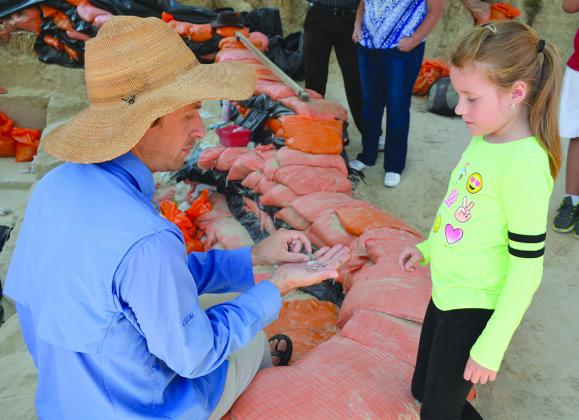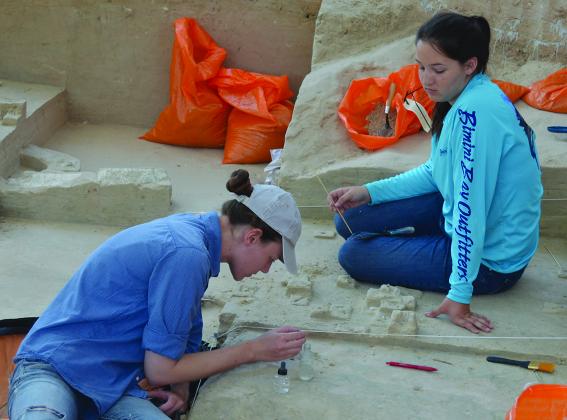Every summer, locals can catch a glimpse of Scurry County’s ancient history with public tours of the paleontological dig site at Roland Springs Ranch.
Under excavation since 2005, the dig site unveils an ancient stream deposit that perfectly preserved animal bones by collecting and burying them. The bones date back to the beginning of the Ice Age about 2.6 million years ago.
“We’ve collected near 10,000 bones in the last 14 years, and they represent 50 different species of animals,” John Moretti, of the Lubbock Lake Landmark Museum of Texas Tech University, said. “The biggest thing we find is something similar to an elephant. These bones are abundant and well-preserved, and they represent the ancient animal community of Scurry County. This is really a complete view of the past, and it’s really special.”
Many of these species are predecessors of the animals that we know today, including rabbits, turtles, rodents, birds, coyotes, snakes and horses.
“The most common thing that we find are extinct giant tortoises,” Moretti said. “Another common thing is a little horse. We don’t find whole animal skeletons, but we do find individual bones.”
According to Moretti, the structure, flow and velocity of the stream had to be just right in order to preserve the bones and not destroy them.
During a public tour of the site on Saturday, Big Spring residents Tom and Tina Batterton said they learned a lot from the dig site.
“I loved every minute of the tour,” Tina Batterton said. “I wanted to get in there and do it myself. I heard about the tour on the radio, and this was our first time out here. Something I learned from the experience is that it’s not as hard to uncover the bones as I thought it would be. I like the fact that the process is hands on.”
One benefit of the process being hands on is that volunteers are invited to work at the dig site every year.
“They do have a volunteer program that the community can come out and get involved in,” Tom Batterton said. “The site is really neat. You can actually see the bones in the ground.”
Though there are only a few weeks left in this summer’s research of the site, there are still two more opportunities to tour the dig site.
“People have to come out and see it for themselves,” Tina Batterton said. “You can see the bones and just hearing about the history is fascinating.”
The Roland Springs Ranch and Scurry County Museum will offer tours of the paleontological dig site at 8 a.m. and at 10 a.m. June 30.
All tours are free and open to the public, but officials said that space is limited.
Call 573-6107 to reserve a spot in the tour.
Image
Body



